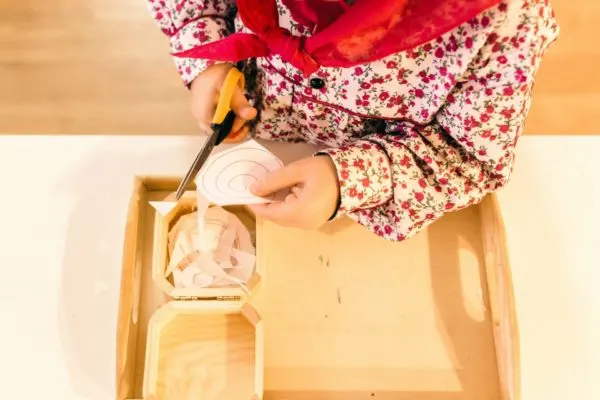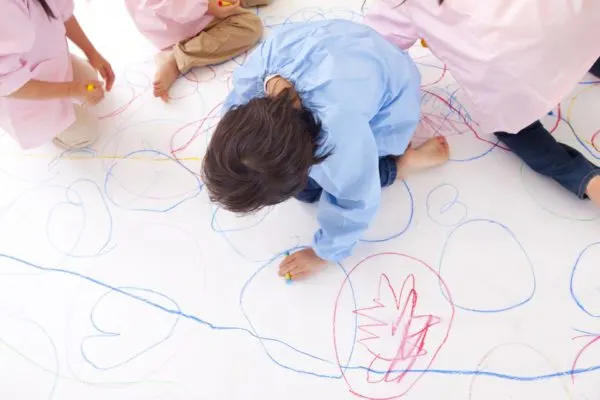Parenting involves a lot of decision making. We all make small, daily choices such as where to eat and what to wear, but then there are more significant decisions whose consequences last longer and, frankly, aren’t quite as easy to make.
At some point, the conversation about how to educate your child comes up. With several options on which route to take for schooling, choosing can be especially tricky.
If you are concerned not only about education but also the real-life, hands-on implementation of academic experiences, then a Montessori-like school may be the right choice for you.
But what exactly is the Montessori philosophy, how does that apply to education, and what names are recognized as Montessori-like schools?
Let’s find out.
What Facilities Are Considered Montessori-Like Schools?
When you start searching for schools, it’s good to know what you are looking for as there are strictly Montessori schools, and then there are others that have the same philosophy yet go under different names.
Although the differences are subtle, it’s good to be familiar with the names and differences between Montessori-like schools.
Traditional Montessori Schools
According to the American Montessori Society, the goal of education is to “develop all aspects of the child.” Many mainstream methods include sitting at desks, reading books, doing seatwork, and watching videos.
Yes, all of those things have their place, but getting the entire body and its senses involved creates a more in-depth and overall memorable experience. Such is the practice of Montessori.

Originated over a century ago by an Italian physician, Maria Montessori, this child-led approach to learning piques a student’s curiosity while encouraging them to think critically, ask questions, and become independent. This method is very motivating and was created to develop a child emotionally, socially, physically, and cognitively.
In short, it is an ideal way to provide students with a well-rounded education.
Waldorf Schools
The philosophy of Waldorf schools is that each child is born with specific abilities and talents already inside of them. These underlying qualities merely need to be woken up inside of the student.
Hence a large quantity of play is incorporated into the school days at these Montessori-like schools.
Traditional Waldorf classrooms mix grades and ages in the same room, yet the school days are less structured than an actual Montessori room. Montessori puts a higher value on structure coupled with education and play, whereas Waldorf concentrates more on self-discovery through interactive activities.

There is also a high concentration on the creative arts with Waldorf. Subjects like music, art, dance, writing, and literature are experienced physically instead of relying solely on book knowledge. This is similar to Montessori!
Instead of having individual subjects, art and music are woven throughout the sciences. These pairings enable students to retain what they’ve learned and process information quickly.
Reggio Emilia Schools
Not unlike traditional Montessori-like schools, Reggio Emilia lacks structure in its curriculum.
Their educational philosophy is extremely child-driven, and instead of relying on textbooks, Reggio Emilia is extremely kinesthetic. Students can guide their education as they explore concepts that have piqued their interest.

Classroom projects complement those interests, which results in more of a self-guided program than other Montessori-like schools.
Projects encourage creativity and discovery while inspiring students to ask questions that they can potentially answer on their own. Children also learn about how to interact with each other and resolve conflicts on their own.
Teachers lay the framework for the students, and this approach is used with younger children.
High/Scope Schools
These Montessori-like schools originated to lay a strong foundation for children in more impoverished areas, where students were more likely to test lower.
The High/Scope model relies heavily on physical movement and interacting with the environment. A typical school day includes both small and large group activities as well as independent play.
Educators are encouraged to ask open-ended questions so that the students can learn critical thinking skills beyond just answering “yes” or “no.”
High/Scope also relies heavily on a “plan-do-review” method to instill concepts into the students. Students spend time outside each day and have quiet times for independent thought.
So Montessori!
Froebel Schools
Friedrich Froebel’s methods laid the foundation for most kindergarten classrooms today. He believed that an environment of discovery was best for learning and also insisted that children had a wealth of potential.
Parents are heavily relied on in Froebel’s model, as they are the first educators, and home and school work in tandem to educate the child.
Movement and active play are essential in these Montessori-like schools, and students learn to be independent under the gentle guidance of their teachers. Problem-solving and independent thought are crucial traits that Froebel’s model instills into their students.
Again..so Montessori!
IB schools
IB schools are very aligned with Montessori. I know from experience.
My daughter attends an IB school and it's all hands-on learning with a multicultural focus. Her school has no desks; children are able to complete their art, writing, reading, ect, in the whatever place in the classroom that is the most comfortable for them.
There is a ton of free-play and the teachers pay close attention to the child's academic abilities and make sure to foster them.
How Do the Classroom Setups of Montessori-Like Schools Look?
Even at higher levels, Montessori classrooms can look a bit elementary. If you attended a public school environment, you might remember that there was a significant change going from primary to middle school.
Traditionally, elementary classroom settings go from highly interactive spaces with nooks for reading, art, creativity, and exploration and in middle school transition into sterile areas filled with desks and chairs all facing one way.
Montessori-like schools offer learning areas and hands-on activities at various levels, so there will continue to be stations, colors, and interactive exhibits, even with older students. Students also learn life skills, such as taking care of the classroom.
Duties, like watering plants, cleaning up messes, and putting away activity centers, falls on the shoulders of the children. Doing this teaches them to respect their belongings and the property of others.
The bonus for parents is that this often translates to cleaner rooms and more helpful children at home.
What Role Do Others Play in Self-Guided Learning?
When entering a Montessori-like classroom, you will see a mix of age groups within one space instead of having single grade settings. This mixing allows students to learn at their own pace while relying on guidance from teachers and older classmates.
Instead of a student feeling inadequate because they don’t learn as fast, they can pace themselves while being encouraged by their peer group. It’s a model of positivity to reinforce learning paces and styles.
Teachers are there to guide and facilitate each child’s learning experience as students discover things on their own. Of course, educators also create plans and assess the students in their activities, but the teacher’s role is one of mentoring through gentle guidance.
How Do Students Interact with Each Other?
Cliques and awkward social situations can impact the lives of kids in school, no doubt. With grade-centric learning, there is the problem of a teacher having to cater to the middle student, which in essence bores the quick learners and leaves behind the slower ones.
This model can lead to comparison. Just because someone doesn’t catch on to arithmetic quickly, doesn’t mean that they won’t author a best seller one day.
In Montessori-like schools, students can pace themselves, enabling them to spend more time on things that confuse them while being able to breeze through subject matter that comes to them more quickly.
This system also highlights strengths and doesn’t draw attention to weaknesses that may make a student feel self-conscious.
Frequently, a child is with the same group of students from the time they enter school until they graduate, which also fosters relationship-building.
As far as student interactions, children learn to try and work things out themselves. Instead of running to the teacher with every issue, students work to amicably settle conflicts by using their critical thinking skills, which expresses regard for the individuals.
Just because someone has a different opinion or wants to play with a toy at the same time, doesn’t mean that the situation needs to escalate. Students are encouraged to pause and take a moment to find solutions if a conflict arises.
Are Students Disciplined?
Within the scope of learning, the Montessori-like schools incorporate respect into their mantra. It is one of the main principles.
Honor is also considered when a child needs discipline. There is an atmosphere of positivity, where practical guidance is firm, yet it is peppered with kindness and shows respect to both the student and teacher.
For example, say a child is acting out in class. Instead of merely correcting the disruptive behavior, Montessori-like schools involve the heart and thought processes of the student.
Children learn not just that their actions are wrong but why they are incorrect and how it is impacting others. There is an emphasis on doing what is right because it’s the correct thing to do and not just to avoid discipline.
This alternative thinking creates responsible adults who are accountable for their actions and seek to amend them if need be.
Does Montessori Stop at the End of the School Day?
If you are interested in Montessori-like schools, you may already be practicing some of its disciplines at home. Having children take responsibility for their actions goes a long way.
As far as hands-on activities, they can do small tasks while you are cooking or help with yard work. Don’t be afraid to get them involved in daily tasks that are age-appropriate.
Essentially, Montessori is a lifestyle, which is beneficial to the students, their parents, and the household. Conflict resolution, critical thinking skills, and a positive attitude all go a long way in life beyond the classroom.
The end goal is to rear a confident adult who contributes to society while showing respect to others. The methods of Montessori-like schools dovetail beautifully with what parents are trying to accomplish at home and beyond.
Cheers and don't forget to subscribe!
